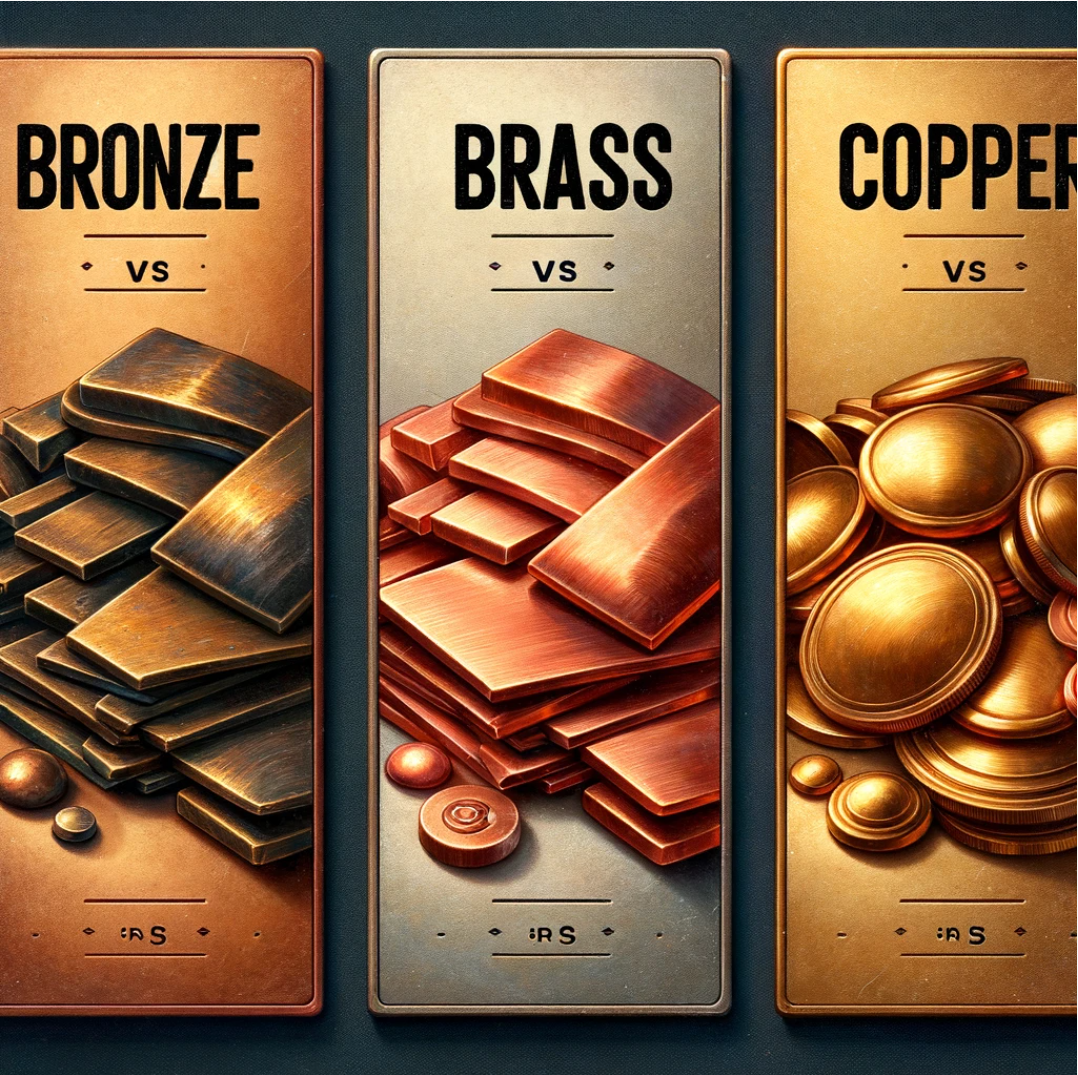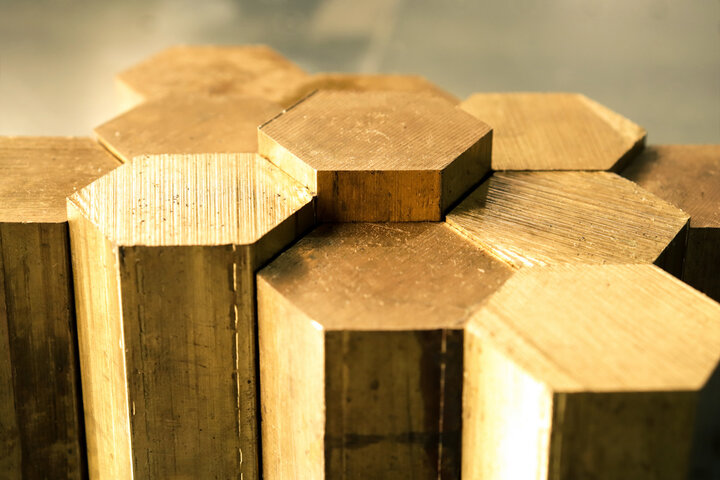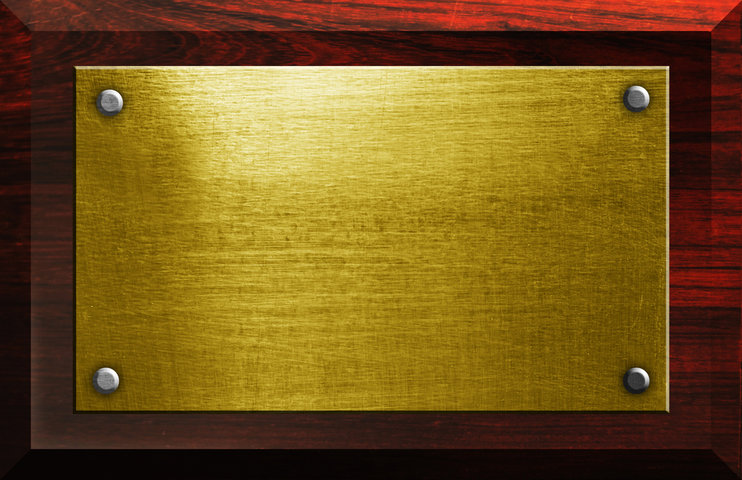
When selecting materials for CNC machining, choosing the right metal is crucial to ensure optimal results while considering factors such as cost, machinability, and end-use requirements. Brass, bronze, and copper are popular choices that share similarities in appearance and composition, often leading to confusion.
In this article, we'll delve into the distinct characteristics of brass, bronze, and copper, helping you select the perfect material for your CNC machining projects.
Brass

Brass is a popular copper alloy composed primarily of copper and zinc. The ratio of these elements can vary, resulting in different grades of brass with unique properties and applications.
Common Grades of Brass
| Grade | Composition | Properties | Applications |
| Cartridge Brass (C260) | 70% Cu, 30% Zn | Good cold working properties | Ammunition, automobiles, fasteners, hardware |
| Yellow Brass (C272) | 67% Cu, 33% Zn | High zinc content | Industrial and architectural applications |
| Leaded Commercial Brass (C330) | Cu, Zn, low Pb | High machinability | Plumbing, pipe fittings |
| Clock Brass (C353) | Cu, Zn | Excellent machinability | Precision components (clocks, watches) |
| Free-Cutting Brass (C360) | Cu, Zn, Pb | Excellent machinability and formability | Hardware, fittings, valves, fasteners |
| Architectural Bronze (C385) | Cu, Zn, Pb | High structural integrity | Construction, architectural applications |
| Naval Brass (C464) | 60% Cu, 39% Zn, 1% Sn | Excellent resistance to saltwater corrosion | Marine applications |
Applications of Brass
Brass finds use in a wide range of industries due to its versatility and desirable properties:
Decorative Elements: Brass is often used for architectural hardware, such as doorknobs, handles, and hinges, thanks to its attractive appearance and durability.
Musical Instruments: Many wind instruments, like trumpets and saxophones, are made from brass due to its acoustic properties and workability.
Plumbing: Brass is a common material for plumbing fixtures and fittings because of its corrosion resistance and machinability.
Electrical Components: The electrical conductivity and formability of brass make it suitable for various electrical applications, such as terminals and connectors.
Precision Machinery: Clock brass (C353) and other machinable grades are used to create intricate components for timepieces and other precision machinery.
Brass's wide-ranging applications demonstrate its versatility and importance in numerous industries, from construction and manufacturing to art and engineering.
Bronze

Bronze is an alloy primarily composed of copper and tin, with other elements sometimes added to create specific properties. The combination of these metals results in a material with unique characteristics that distinguish it from brass and pure copper.
Types of Bronze Alloys
Several types of bronze alloys exist, each with its own distinct properties and applications:
Phosphor Bronze: This alloy contains phosphorus, which improves its strength, durability, and corrosion resistance. It's commonly used in springs, bearings, and gears.
Aluminum Bronze (Alloy 954): With the addition of aluminum, this bronze alloy exhibits high strength and is suitable for industrial equipment and mounting applications.
Silicon Bronze: The inclusion of silicon enhances the bronze's corrosion resistance and mechanical properties, making it ideal for marine hardware and welding applications.
Leaded Tin Bronze (Alloy 932): This alloy contains lead, which improves its machinability and wear resistance. It's often used for making bushings, washers, and non-pressure components.
Properties of Bronze Alloys
Bronze alloys possess several desirable properties that make them suitable for various applications:
High Strength and Durability: Bronze alloys exhibit excellent mechanical strength and durability, allowing them to withstand heavy loads and resist wear.
Corrosion Resistance: Bronze alloys, particularly those containing phosphorus or silicon, offer exceptional resistance to corrosion, especially in marine environments.
Low Friction and Wear Resistance: The addition of lead or other elements can reduce friction and improve wear resistance in bronze alloys, making them suitable for bearing and bushing applications.
Common Applications of Bronze
Due to its unique properties, bronze finds use in a wide range of industries and applications:
Marine Hardware: Bronze's corrosion resistance makes it an ideal choice for ship fittings, propellers, and other marine hardware exposed to saltwater.
Bearings and Bushings: The low friction and wear resistance of certain bronze alloys make them suitable for use in bearings, bushings, and gears.
Sculptures and Decorative Elements: Bronze has been used for centuries to create intricate sculptures, statues, and decorative objects due to its ability to capture fine details and its attractive patina.
Electrical Components: Some bronze alloys, such as phosphor bronze, are used in electrical connectors and springs due to their conductivity and durability.
| Alloy | Composition | Properties | Applications |
| Phosphor Bronze | Cu, Sn, P | High strength, corrosion resistance | Springs, bearings, gears |
| Aluminum Bronze (954) | Cu, Al | High strength | Industrial equipment, mounting applications |
| Silicon Bronze | Cu, Si | Corrosion resistance, mechanical strength | Marine hardware, welding |
| Leaded Tin Bronze (932) | Cu, Sn, Pb | Machinability, wear resistance | Bushings, washers, non-pressure components |
Bronze's versatility and desirable properties make it an essential material in various industries, from marine and industrial applications to art and engineering.
Copper

Copper is a naturally occurring, non-ferrous metal with a distinctive reddish-orange color. As a pure metal, copper is known for its versatility and unique set of properties that make it invaluable in various industries.
Key Properties of Copper
Copper possesses several remarkable properties that contribute to its widespread use:
High Electrical and Thermal Conductivity: Copper is an excellent conductor of electricity and heat, making it a primary choice for electrical wiring and thermal management applications.
Formability and Ductility: Copper's exceptional formability and ductility allow it to be easily shaped into wire, tubing, and other complex forms without breaking.
Corrosion Resistance: Copper develops a protective patina when exposed to the elements, providing excellent resistance to corrosion in various environments.
Antimicrobial Properties: Copper has natural antimicrobial properties, making it suitable for use in healthcare settings and food processing equipment to prevent the spread of bacteria.
Grades of Copper and Their Applications
Several grades of copper are available, each with specific properties tailored to different applications:
Electrolytic Tough Pitch (ETP) Copper (Alloy 110): This grade offers the highest electrical and thermal conductivity among copper alloys, along with good formability. It is commonly used in electrical wiring, bus bars, and transformer windings.
Oxygen-Free Electronic (OFE) Copper (Alloy 101): OFE copper provides high conductivity and ductility, making it suitable for electronic applications, such as printed circuit boards and connectors.
Deoxidized High Phosphorus (DHP) Copper (Alloy 122): DHP copper exhibits good formability, weldability, and brazing properties. It is often used in the production of tubing for plumbing and refrigeration systems.
Tellurium Copper (Alloy 145): This grade contains 0.4-0.7% tellurium, which enhances its machinability while maintaining high conductivity. It is used in the manufacture of electrical connectors, switches, and other machined components.
Uses of Copper in Various Industries
Copper's unique properties make it a crucial material in numerous industries:
Electrical Wiring and Power Transmission: Copper's high electrical conductivity makes it the primary choice for wiring in buildings, power transmission lines, and electrical motors.
Heat Exchangers and Cooling Systems: Copper's excellent thermal conductivity allows it to efficiently transfer heat, making it ideal for use in heat exchangers, radiators, and air conditioning systems.
Plumbing and Piping: Copper's corrosion resistance, formability, and antimicrobial properties make it a preferred material for plumbing fixtures, water supply lines, and gas distribution systems.
Roofing and Architectural Elements: Copper's durability and attractive patina make it a popular choice for roofing, gutters, and decorative architectural elements.
| Grade | Composition | Properties | Applications |
| ETP Copper (110) | 99.9% Cu | Highest electrical and thermal conductivity | Electrical wiring, bus bars, transformers |
| OFE Copper (101) | 99.99% Cu | High conductivity, ductility | Electronic components, PCBs |
| DHP Copper (122) | Cu, 0.015-0.040% P | Good formability, weldability, brazing | Tubing for plumbing, refrigeration |
| Tellurium Copper (145) | Cu, 0.4-0.7% Te | High conductivity, machinability | Electrical connectors, switches, machined parts |
Copper's versatility, coupled with its exceptional properties, cements its position as a fundamental material in modern industry, from the electrical and electronic sectors to construction and manufacturing.
Comparing Brass, Bronze, and Copper: Key Differences
While brass, bronze, and copper share some similarities, they exhibit distinct differences in composition, properties, and applications. Understanding these differences is crucial for selecting the most suitable material for a given project.
Composition and Alloying Elements
The primary difference between these metals lies in their composition:
Brass: An alloy of copper and zinc, with occasional additions of other elements like lead, aluminum, or silicon.
Bronze: An alloy of copper and tin, sometimes containing other elements such as phosphorus, aluminum, or silicon.
Copper: A pure, naturally occurring metal with minimal additions of other elements in some grades.
Mechanical Properties
Strength and Hardness
In terms of strength and hardness, bronze generally outperforms brass and copper:
Bronze: High strength and hardness, with tensile strength ranging from 350 to 635 MPa and hardness between 60-290 BHN.
Brass: Moderate strength and hardness, with tensile strength between 338 to 469 MPa and hardness ranging from 65-95 BHN.
Copper: Lower strength and hardness compared to brass and bronze, with a tensile strength of 210 MPa and hardness between 60-95 BHN.
Ductility and Malleability
Copper exhibits the highest ductility and malleability, followed by brass and then bronze:
Copper: Excellent ductility and malleability, allowing it to be easily formed into various shapes.
Brass: Good ductility and malleability, making it suitable for forming and machining.
Bronze: Lower ductility and malleability compared to brass and copper, with a higher risk of cracking during forming.
Wear Resistance and Friction
Bronze alloys containing lead or phosphorus offer the best wear resistance and lowest friction, followed by brass and copper.
Thermal and Electrical Conductivity
Copper is the most thermally and electrically conductive, followed by brass and then bronze:
Copper: Highest thermal and electrical conductivity, with 100% IACS (International Annealed Copper Standard).
Brass: Good thermal and electrical conductivity, ranging from 28% to 44% IACS depending on the alloy.
Bronze: Lower thermal and electrical conductivity compared to brass and copper, typically around 15% IACS.
Corrosion Resistance
Bronze offers the best corrosion resistance, especially in marine environments, followed by copper and then brass:
Bronze: Excellent corrosion resistance due to the formation of a protective patina.
Copper: Good corrosion resistance, developing a green patina over time.
Brass: Moderate corrosion resistance, with some alloys being more resistant than others.
Machinability, Formability, and Weldability
Brass and copper generally offer better machinability, formability, and weldability compared to bronze:
Brass: Excellent machinability and formability, with good weldability depending on the alloy.
Copper: Good machinability, formability, and weldability, particularly in oxygen-free grades.
Bronze: Moderate machinability and formability, with limited weldability due to the risk of cracking.
Aesthetics and Color Variations
Brass: Yellowish-gold appearance, with some alloys having a more silvery or reddish hue.
Bronze: Reddish-brown color, often developing a darker patina over time.
Copper: Distinctive pinkish-orange color that can develop a green or blue-green patina.
Cost Comparison and Availability
Copper is generally the most expensive, followed by bronze and then brass, due to the varying costs of alloying elements and processing. However, all three metals are widely available in various grades and forms.
| Property | Brass | Bronze | Copper |
| Composition | Cu-Zn | Cu-Sn | Pure Cu |
| Tensile Strength (MPa) | 338-469 | 350-635 | 210 |
| Hardness (BHN) | 65-95 | 60-290 | 60-95 |
| Thermal Conductivity (% IACS) | 28-44 | ~15 | 100 |
| Electrical Conductivity (% IACS) | 28-44 | ~15 | 100 |
| Corrosion Resistance | Moderate | Excellent | Good |
| Machinability | Excellent | Moderate | Good |
| Formability | Excellent | Moderate | Good |
| Weldability | Good | Limited | Good |
| Color | Yellowish-gold | Reddish-brown | Pinkish-orange |
Understanding the key differences between brass, bronze, and copper allows engineers and designers to make informed decisions when selecting materials for specific applications, taking into account factors such as mechanical properties, conductivity, corrosion resistance, and cost.
Choosing the Right Metal for Your Application
Selecting the appropriate metal for your project is essential to ensure optimal performance, durability, and cost-effectiveness. When deciding between brass, bronze, and copper, consider the following factors:
Factors to Consider
Specific requirements of the application: Evaluate the primary function and purpose of the component or product to determine which metal properties are most critical.
Environmental conditions and corrosion resistance needs: Assess the environment in which the metal will be used, including exposure to moisture, chemicals, or salt water, to choose a metal with suitable corrosion resistance.
Mechanical and thermal properties required: Consider the necessary strength, hardness, ductility, and thermal conductivity for your application to ensure the chosen metal can withstand the intended use.
Aesthetic preferences and design considerations: Take into account the desired appearance, color, and finish of the final product, as each metal offers unique aesthetic qualities.
Budget constraints and material availability: Evaluate the cost of each metal option and its availability in the required form and grade to ensure the project remains within budget and on schedule.
Examples of Applications Best Suited for Each Metal
Brass
Decorative hardware and fixtures
Plumbing components and valves
Musical instruments
Electrical connectors and terminals
Gears and bearings in low-stress applications
Bronze
Marine hardware and ship fittings
Bearing and bushing applications requiring low friction and high wear resistance
Sculptures, medals, and decorative art
Electrical contacts and springs
Propellers and impellers in marine environments
Copper
Electrical wiring and bus bars
Heat exchangers and cooling systems
Plumbing pipes and fittings
Roofing and gutters
Antimicrobial surfaces in healthcare settings
| Application | Primary Considerations | Recommended Metal |
| Electrical wiring | High conductivity, ductility | Copper |
| Marine hardware | Corrosion resistance, strength | Bronze |
| Decorative fixtures | Appearance, machinability, cost | Brass |
| Heat exchangers | Thermal conductivity, corrosion resistance | Copper |
| Bearings and bushings | Wear resistance, low friction | Bronze |
| Musical instruments | Acoustics, workability, aesthetics | Brass |
| Plumbing components | Corrosion resistance, formability, cost | Copper or Brass |
| Sculptures and art | Aesthetics, patina development | Bronze |
When selecting the right metal for your application, prioritize the most critical properties and requirements while considering budget and availability. Consult with material experts or suppliers to discuss your specific needs and obtain guidance on the most suitable metal choice for your project.
By carefully evaluating the factors mentioned above and understanding the unique characteristics of brass, bronze, and copper, you can make an informed decision that ensures the success and longevity of your application.
Conclusion
In this article, we explored the key differences between brass, bronze, and copper, focusing on their composition, properties, and applications. Brass, an alloy of copper and zinc, is known for its machinability, formability, and aesthetic appeal. Bronze, composed of copper and tin, excels in strength, corrosion resistance, and wear resistance. Copper, a pure metal, offers unparalleled electrical and thermal conductivity, along with good formability and corrosion resistance.
Understanding these distinctions is crucial for selecting the optimal material for your specific application. Consider factors such as required mechanical properties, environmental conditions, aesthetics, and budget when making your choice. Consult with material experts or conduct further research to ensure the best possible outcome for your project.
At WUERD, we're your trusted partner for precision manufacturing. Our expert engineers and advanced facilities deliver top-notch CNC machining, 3D printing, and injection molding solutions. We guide you in material selection, ensure fast turnaround, and offer unbeatable value.
From prototyping to production, we provide end-to-end service. Upload your files online for instant quotes and design optimization advice. With years of experience serving industry leaders, we understand your unique needs. Contact us today and let WUERD help you shape the future of manufacturing!








